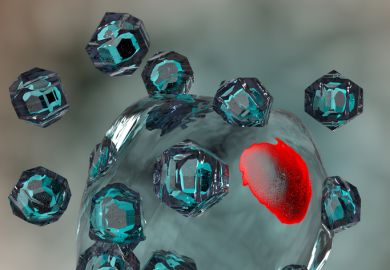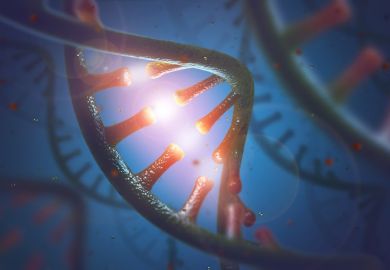Is there a difference between the English and the French approaches to higher education? Nuclear Magnetic Resonance seems to support this hypothesis.
NMR is a phenomenon providing a probe that can be used to measure a variety of physical, chemical and biological properties of matter including tissue. The subject has blossomed over the past 50 years and is now an important area of study and research with many practical applications, in particular in medicine. As a result there are numerous books and textbooks covering the topic.
Canet's book is a translation into English of his French textbook, RMN: concepts et methodes. In writing such a book, any author has to address several problems: which part of the field to select, whether to go for general coverage, and at which level the subject should be addressed, in particular that of the associated mathematics. NMR can be described using classical mechanics or quantum mechanics. This book might be considered an example of a French approach, in that it is rather theoretical and demands a substantial mathematical background. It is a long way from a text that might be entitled Magnetic Resonance for Dummies, for which some readers might be waiting. A problem when looking for a book on this subject in a library is, in which section to search for it? A quick check suggests that in many cases most of the relevant books are kept in the chemistry section. I wonder how many English chemistry students have the necessary background to cope with Canet's book. Comparable French students, on the other hand, seem to have a much more intensive mathematical grounding. An interesting question is whether it is more efficient to devote time to giving students the necessary (mathematical) tools, the learning of which they resist, or to end up spending more time in the teaching of the applications in which these tools might have been helpful.
There are several aspects of this book that could be improved, not least the title. It would better reflect the content if it were changed to NMR Spectroscopy. Although there is some discussion about imaging, including a brief presentation of phase encoding, this is so brief as to be essentially unhelpful. It is also now rather out of date, for example stating that 3D acquisitions are not generally employed. However the coverage of the various spectroscopic acquisition methods including multidimensional data handling is excellent, although little practical information, for example on instrumentation or sample preparation, is included. The discussion of the concepts of spectroscopy and relaxation methods is good, as is the coverage of various named pulse sequences such as the nuclear overhauser effect spectroscopy- Noesy (they are always referred to by acronyms), Roesy, Waltz, Cyclops and many more, including the delightful alternative name for Tocsy which is Hohaha.
Some background help is provided in this area for the less able reader, for example a short section about Fourier transforms and convolution, even a presentation of the sampling theorem. Likewise there are many helpful diagrams, indicating pulse sequences and resulting free induction decay (Fid) signals. But there are a number of typographical mistakes. The great Croatian-born scientist Nikola Tesla not only loses his capital first letter but later on becomes dyslexically mangled as Telsa. The author apologises in his introduction for the difficulty of translating his "French-English". The result is, in fact, quite understandable, but at times a little unnatural and stilted. The index is also unreliable: for example magic angle is cited, but not magic angle spinning.
The more difficult mathematical sections are printed in a smaller typeface, and should be left for a second pass through the book. In these sections, the reader is faced with understanding Eigenfunctions and Eigenvalues and using the Dirac bra and ket notation, both introduced without explanation. This sharply contrasts with the approach of a classic textbook in this field, Nuclear Magnetic Resonance Spectroscopy by Robin K. Harris (1986), which covers much of the same material but provides a lot more help to the less mathematically able reader. Robin Harris is also much more readable. Another good alternative is Magnetic Resonance Spectroscopy in Biology and Medicine by J. D. de Certaines, W. M. M. J. Bovee and F. Podo.
While there are other books that are more substantial (intimidating?), for example those of R. R. Ernst or C. P. Slichter, Canet gives little quarter to his readers in respect of indicating why something might be useful or giving a feeling for how the maths might be applied.
His approach seems to be: start with the theory, the applications should then be obvious. A more friendly approach might be: explain where it is leading, why it is useful, what the applications are, and then develop (hide?) the theory. While there is nothing wrong with a more rigorous Cartesian approach, you have to get the students to accept it. The English and American approach is often to treat the problem using notions from classical mechanics, while reminding the student that there is an alternative quantum mechanical approach that is sometimes important. The French seem to like starting with the quantum mechanics, making sure that their students have a correct theoretical basis for their understanding. Canet's approach is hence strong on the concepts but not so good on the methods.
This book would be unsuitable for most undergraduates and postgraduates, for whom I would recommend Robin Harris's book. It is, however, more appropriate for the specialist worker.
In conclusion, I hope the author will understand my criticisms as coming from the different approach to NMR of (pun intended) perFidious Albion.
Andrew Todd-Pokropek is professor of medical physics, University College London.
Nuclear Magnetic Resonance: Concepts and Methods
Author - Daniel Canet
ISBN - 0 471 94234 0 and 961450
Publisher - John Wiley & Sons
Price - £55.00 and £.50
Pages - 260
Register to continue
Why register?
- Registration is free and only takes a moment
- Once registered, you can read 3 articles a month
- Sign up for our newsletter
Subscribe
Or subscribe for unlimited access to:
- Unlimited access to news, views, insights & reviews
- Digital editions
- Digital access to THE’s university and college rankings analysis
Already registered or a current subscriber? Login



